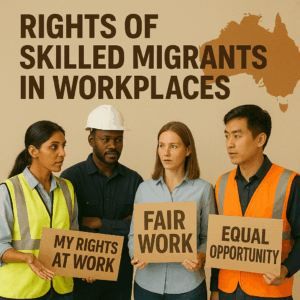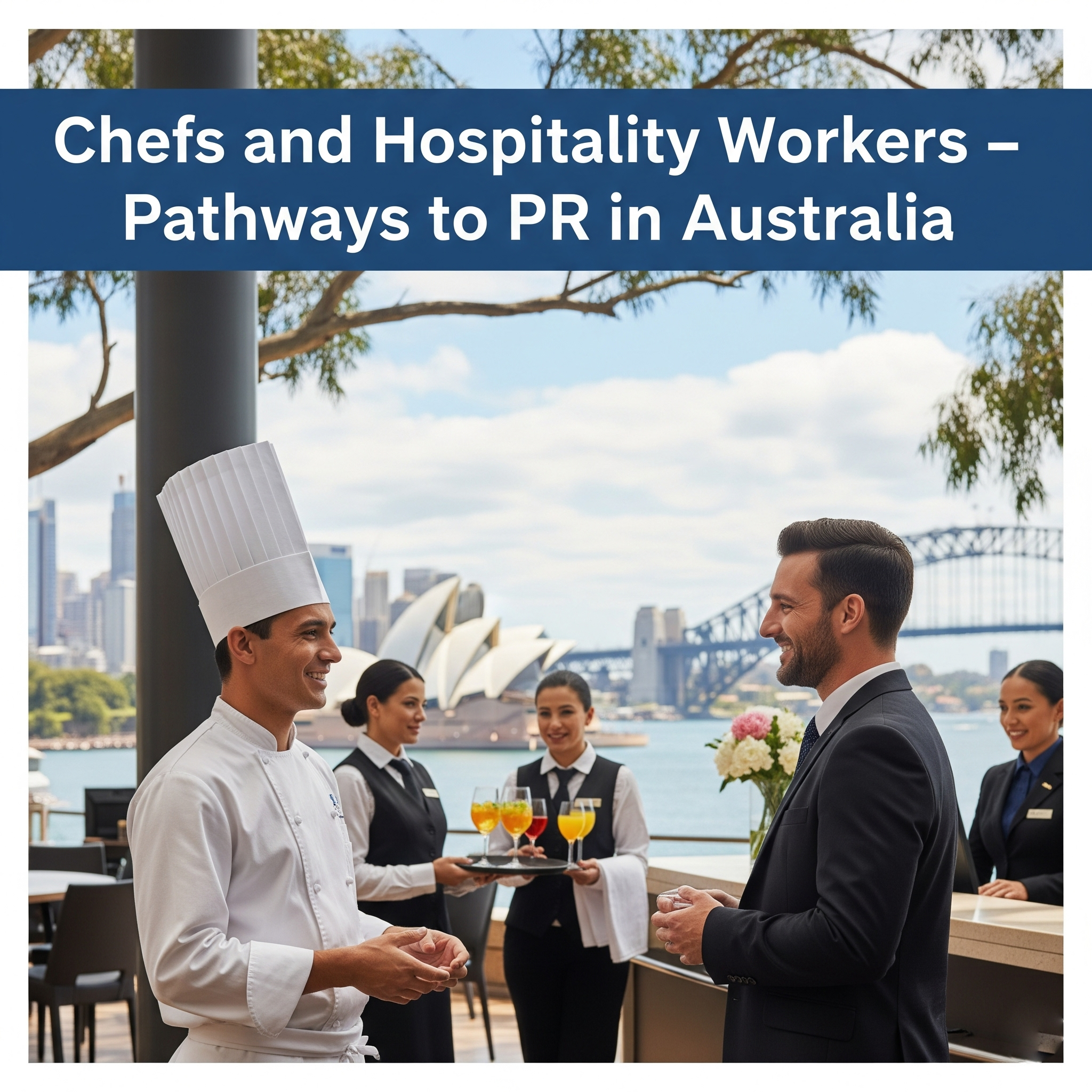Uncover the real pathways to permanent residency for chefs and hospitality workers in Australia. Learn about skilled migration, key myths, and visa options.
Chefs and Hospitality Workers – Pathways to PR
Australia’s hospitality sector is booming, but there’s a lot of confusion about how chefs and hospitality workers can achieve permanent residency (PR). Misconceptions about eligibility, skill shortages, and migration options often lead to missed opportunities. Let’s debunk the most common myths and reveal the real pathways to PR for chefs and hospitality professionals.
Myth 1: “Only Highly Specialized Chefs Can Get PR in Australia”
The Reality:
Chefs, cooks, and hospitality workers have multiple migration options—not just for top-tier or celebrity chefs. Australia’s Skills Priority List consistently highlights shortages in food services, with thousands of chef and cook vacancies nationwide. The occupation “Chef” (ANZSCO 351311) is on the Medium to Long-Term Strategic Skills List (MLTSSL), making it eligible for skilled migration and employer sponsorship.
Key PR Pathways for Chefs and Cooks:
- Skilled Independent Visa (subclass 189): For chefs who meet the points test and have a positive skills assessment, this visa offers direct PR without employer sponsorship.
- Skilled Nominated Visa (subclass 190): State or territory nomination for skilled chefs and hospitality professionals, leading to PR.
- Skilled Work Regional (Provisional) Visa (subclass 491): For those willing to live and work in regional Australia, with a pathway to PR after three years.
- Employer Nomination Scheme (ENS) Visa (subclass 186): Allows employers to sponsor skilled chefs and hospitality staff for PR after meeting work and skills requirements.
- Temporary Skill Shortage (TSS) Visa (subclass 482): A temporary visa that can lead to PR through employer nomination after two or more years.
Skills Assessment:
A positive skills assessment from Trades Recognition Australia (TRA) is mandatory for most chef and cook PR applications. This involves proving your qualifications and at least three years of relevant work experience, including supervisory experience for chefs10.
Myth 2: “Hospitality Workers Can’t Get PR—Only Chefs and Managers Qualify”
The Reality:
While chefs and managers are in high demand, the hospitality sector offers PR pathways for a variety of roles. Cooks, pastry cooks, café and restaurant managers, hotel managers, and even some front-line staff can access migration options if their occupation appears on the relevant skills lists.
Migration Options for Hospitality Workers:
- Cooks and Pastry Cooks: Listed on the Short-Term Skilled Occupation List (STSOL), cooks and pastry cooks can access provisional visas like the TSS 482 or regional 494, which may lead to PR after meeting additional criteria.
- Hotel and Accommodation Managers: These roles are recognized under the ANZSCO framework and can qualify for skilled migration, especially in regional areas or through employer sponsorship.
- Other Roles: Waiters, baristas, and front office supervisors may access migration through regional or labor agreement streams, provided they have the right qualifications and experience.
Key Steps for All Hospitality Applicants:
- Complete Recognized Qualifications: For chefs, a Certificate IV in Commercial Cookery is required. Cooks and other roles need AQF-aligned certificates or diplomas.
- Gain Relevant Work Experience: Most pathways require at least three years of full-time, post-qualification experience.
- Pass a Skills Assessment: TRA or VETASSESS will assess your qualifications and experience for migration purposes.
- Meet English and Points Requirements: Achieve the required English test scores and accumulate at least 65 points for skilled migration.
Myth 3: “Migration Rules for Chefs and Hospitality Workers Don’t Change”
The Reality:
Migration policies and occupation lists are regularly reviewed to reflect Australia’s labor market needs. For example, the government has considered “skill-first” reforms that could impact which hospitality roles are eligible for sponsorship and PR. However, industry advocacy and ongoing shortages mean that chefs and hospitality workers remain in demand, with regular updates to skills lists and visa requirements.
Stay Updated:
- Monitor the Skills Lists: The MLTSSL, STSOL, and regional occupation lists are updated annually. Check the Department of Home Affairs website for the latest information.
- Seek Professional Advice: Migration agents and industry bodies can help you navigate changes and maximize your chances of success.
Conclusion
Australia’s hospitality sector offers real, achievable pathways to PR for chefs, cooks, and a range of hospitality professionals. Don’t let myths hold you back—understand the requirements, prepare your documents, and seize the opportunity to build your future in Australia’s vibrant hospitality industry.




